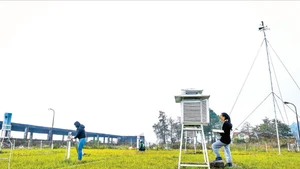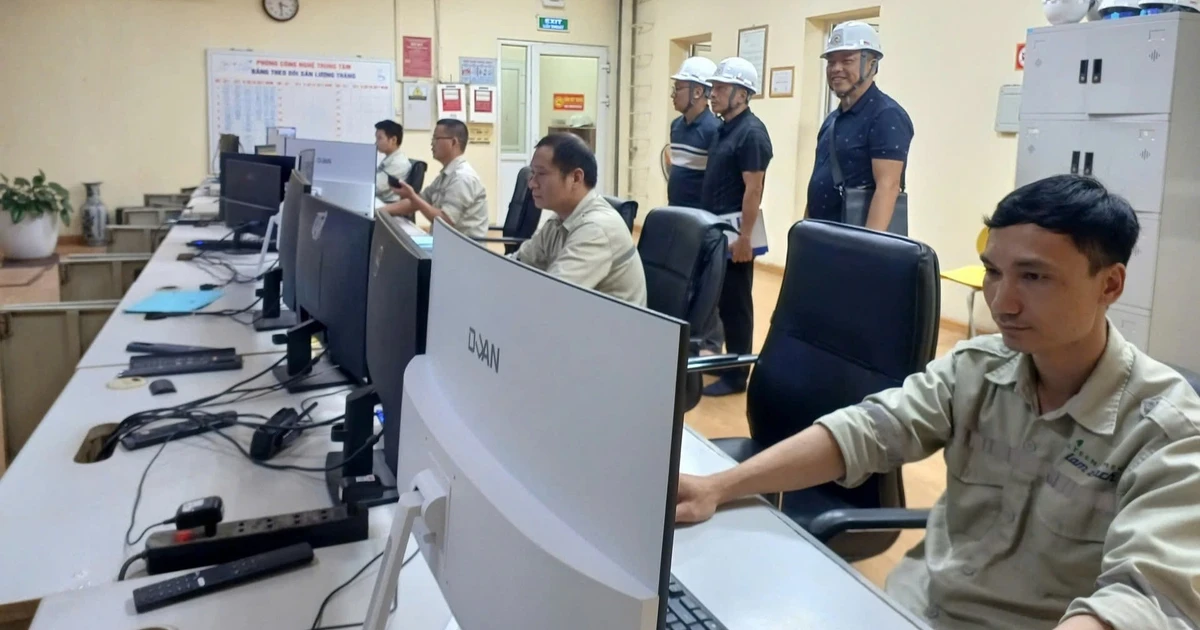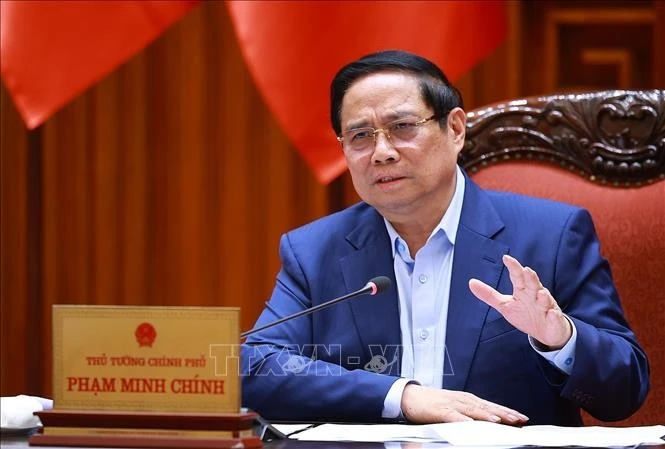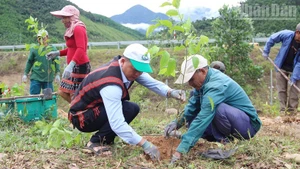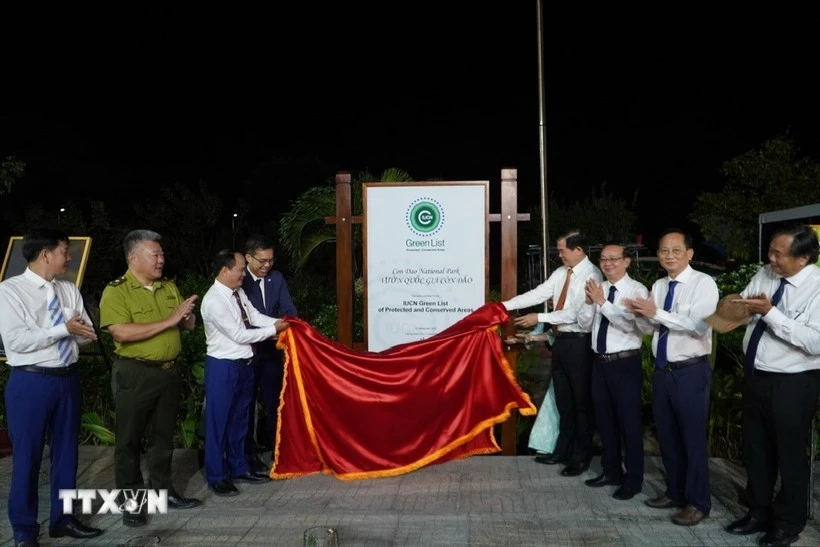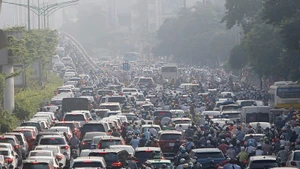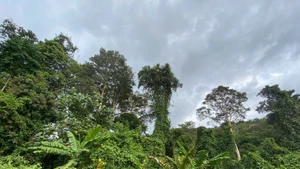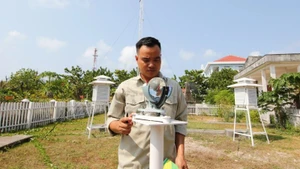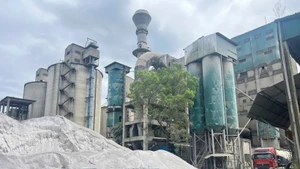A report on the national forest status released by the Ministry of Agriculture and Environment on March 31, 2025, indicates that the total forest area stands at 14,874,302 hectares, including 10,133,952 hectares of natural forest and 4,740,350 hectares of planted forest. The national forest coverage rate reaches 42.03%. These more than 14.8 million hectares of forest could generate between 50 and 70 million surplus carbon credits, offering both economic benefits and supporting the multifunctional value of forest ecosystems. In addition to direct economic gains from timber, forest products, and hydropower, it is crucial to generate revenue through non-timber products such as carbon credits.
Producing high-quality forest carbon credits
Viet Nam’s net greenhouse gas emissions have increased over time, from 150.9 million tonnes of carbon dioxide in 2000 to 420.7 million tonnes in 2020. According to Prof. Dr. Pham Van Dien, Rector of the Viet Nam National University of Forestry, the net emissions for 2030 and 2050 are projected at 927 million tonnes and 1.5 billion tonnes, respectively. This highlights the substantial demand for the production, supply, and offsetting of carbon credits to achieve the Net Zero target.
Among current production industries in Viet Nam, forestry is the only one with negative net emissions, meaning it absorbs more than it emits. From 2025 to 2030, the forestry sector is estimated to absorb around 40 million tonnes of carbon dioxide annually. Forest carbon credits not only serve the domestic market but also hold considerable value in international markets.
Prof. Dr. Pham Van Dien also stressed the need to promote the production of high-quality forest carbon credits, such as blue carbon credits generated from mangrove forests, seagrasses, wetlands, and tidal flats. Viet Nam's 200,000 hectares of mangroves store approximately 8.7 million tonnes of carbon and can absorb between 1.4 and over 2 million tonnes of carbon dioxide per year. Natural forests with high biodiversity and those playing a vital role for communities—spanning over 10 million hectares—can absorb more than 30 million tonnes of carbon dioxide annually. Forest carbon credits labeled with CCPs and certified by ICVCM currently cover around 600,000 hectares, capable of absorbing 1.2 to 2 million tonnes of carbon dioxide annually.
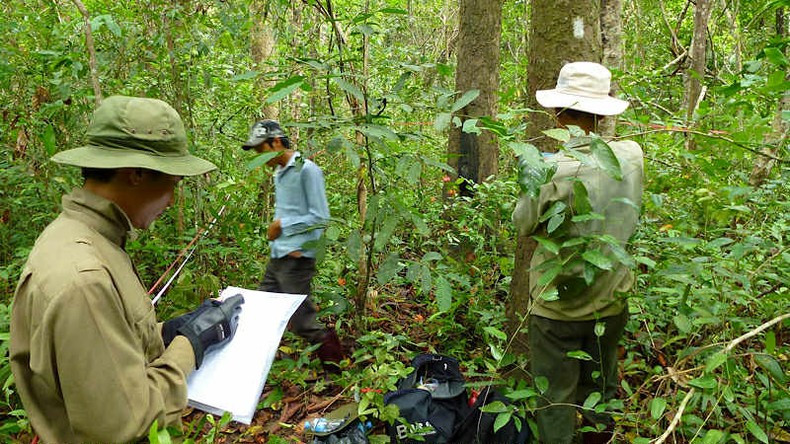 |
| Forest inventory activities. (Photo: TRAN LAM-HANH VAN) |
According to the Ministry of Agriculture and Environment, the Northeast region holds the highest carbon storage capacity, estimated at 21 million tonnes per year, including provinces such as Tuyen Quang.
Ly Xuan Binh, Head of the Tuyen Quang Provincial Forest Protection Department, reported that the province has nearly 450,000 hectares of forest with a coverage rate exceeding 65%, supplying about one million cubic metres of planted timber annually. The local forestry production value reached 7.5% per year and accounts for 13% of the total value of agriculture, forestry, and fisheries production. The Tuyen Quang Provincial Department of Agriculture and Environment estimates that its forests could absorb approximately 4 million tonnes of carbon dioxide annually, presenting significant potential for mobilising financial resources through the sale or transfer of forest carbon credits to foreign enterprises via REDD+ activities (an international mechanism aimed at reducing emissions by preventing deforestation and forest degradation).
However, forest carbon trading under the REDD+ mechanism has yet to be implemented in the province. Readiness to participate in the carbon market remains limited due to the lack of detailed regulations on forest carbon sequestration services, emission reductions from deforestation prevention and degradation mitigation, sustainable forest management, and green growth. These are among the five types of forest environmental services outlined in the Forestry Law, but the absence of detailed provisions leaves local authorities without a legal basis for implementation.
Economic incentives and financial mobilisation through carbon exchange
Binh added that, due to the aforementioned challenges, the province’s efforts are currently limited to preparatory activities pending the establishment of a full legal framework. He proposed that competent authorities should issue detailed regulations to enable local implementation.
Assoc. Prof. Dr. Nguyen Ba Ngai, Vice President and Secretary-General of the Viet Nam Forest Owners Association, noted: “Viet Nam lacks regulations on forest carbon ownership in relation to forest ownership and land-use rights, which is a critical condition for transferring forest carbon. Moreover, there are no specific provisions on how forest carbon, once certified as carbon credits, can be treated as a forest asset on par with timber or non-timber products.”
Prof. Dr. Pham Van Dien also pointed out that Decree No. 06/2022/ND-CP, which governs greenhouse gas emissions reduction, does not provide clear guidance on carbon credit trading. There are currently no specific rules on operational mechanisms, pricing, or monitoring systems for carbon credit exchanges.
To develop the carbon market, several experts suggest that forest carbon should soon be classified as a forest product and recognised as a tradable commodity, similar to other forest products. Furthermore, to clearly define forest carbon rights, forest carbon use rights must be included under forest ownership and forest land-use rights.
Regarding the transfer of forest carbon credits, the Government should issue a mechanism allowing for the exchange and transfer of emission reduction results and the sale of carbon credits abroad, while ensuring that national emission reduction targets and commitments are upheld.
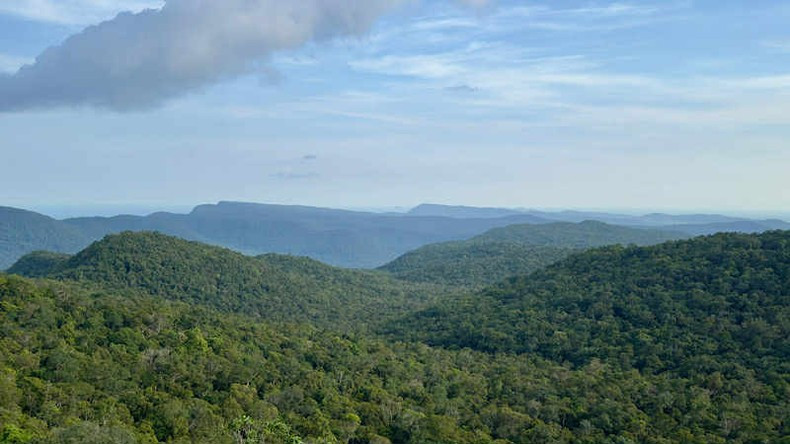 |
| Viet Nam’s forests store large carbon reserves. (Photo: HANH VAN) |
Given this context, Dr. Tran Lam Dong, Deputy Director of the Viet Nam Academy of Forest Sciences, stated that in order to be issued forest carbon credits, projects must be developed and implemented in compliance with carbon credit standards set by recognised certification systems. Projects must demonstrate emission reductions attributable to their activities through the MRV (Measurement, Reporting, and Verification) system.
Currently, the Ministry of Agriculture and Environment has tasked the Department of Forestry and Forest Protection and the Office for Sustainable Forest Management Certification, under the Viet Nam Academy of Forest Sciences, with developing Viet Nam's National Forest Carbon Standard, which will serve as the basis for issuing forest carbon credits. However, once introduced, specific guidance will be required to help forest owners and investors understand how to develop forest carbon credit projects that meet the standard and qualify for certification.
In the near future, regulations on emission quotas and requirements for emission source inventories across 2,166 facilities, along with the transformation of production models and technologies to reduce emissions, will drive the development of both compliance and voluntary carbon markets. The operation of a carbon credit exchange will help establish a clear market value for carbon credits and create economic incentives, especially once carbon credits are allowed to be traded as valuable financial assets. The carbon credit market will then become not only an environmental tool but also a channel for mobilising new financial resources for green economic development.




